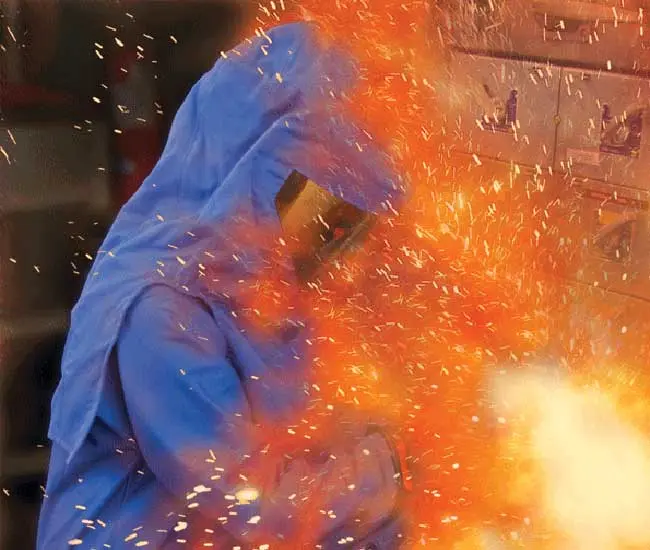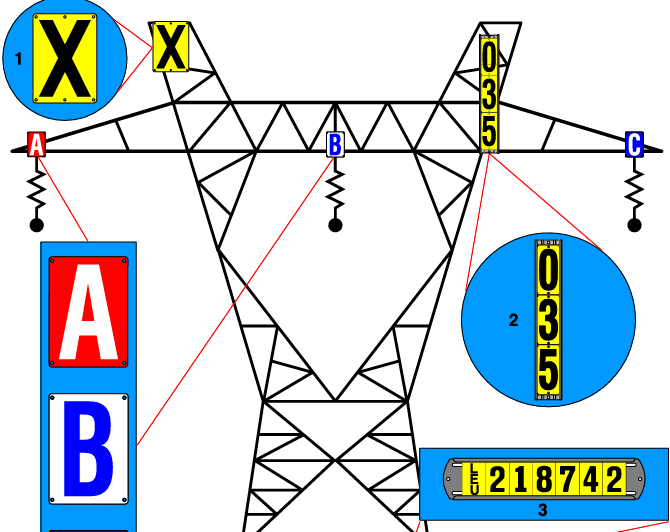Electric Flash: Causes, and Hazards
By R.W. Hurst, Editor

Arc Flash Training - CSA Z462 Electrical Safety
Our customized live online or in‑person group training can be delivered to your staff at your location.

- Live Online
- 6 hours Instructor-led
- Group Training Available
Download Our OSHA FS3529 Fact Sheet – Lockout/Tagout Safety Procedures

- Learn how to disable machines and isolate energy sources safely
- Follow OSHA guidelines for developing energy control programs
- Protect workers with proper lockout devices and annual inspections
Electric flash refers to a sudden burst of electrical energy, often dangerous and intense. To calculate power factor, divide real power (kW) by apparent power (kVA), helping improve system efficiency and reduce energy losses in AC circuits.
Request a Free Training Quotation
What is "electric flash"?
Electric flash is a high-energy discharge event that occurs during electrical faults or failures.
✅ Can result from arc flash or insulation failure
✅ Poses severe burn, fire, and explosion hazards
✅ Requires PPE and proper system protection for safety
Electric flash, commonly referred to as arc flash, is a severe hazard in systems that can result in significant injuries and damage. Understanding its causes, potential hazards, and necessary precautions is essential for ensuring safety in environments where high voltages are present. This article explores the nature of this phenomenon, its implications, and key safety standards such as IEEE 1584 and NFPA 70E.
Frequently Asked Questions
What Causes an Electric Flash?
It occurs when an arc forms between conductors or from a conductor to a ground. Various factors, including equipment failure, insulation breakdown, or human error can trigger this arc. High voltages can ionize the air, creating a conductive plasma channel through which the arc travels. This process releases a tremendous amount of energy in the form of light and heat, resulting in an arc flash.
What is Electrical Explosion?
An explosion, also known as an arc blast, occurs when the intense heat causes a rapid expansion of air and vaporized materials. This explosion can produce a powerful pressure wave, akin to a small bomb, that can cause significant damage to equipment and severe injuries to anyone nearby. The pressure wave, combined with the thermal energy of the arc, makes explosions particularly hazardous.
Electricity Today T&D Magazine Subscribe for FREE

- Timely insights from industry experts
- Practical solutions T&D engineers
- Free access to every issue
What are the Electric Flash Hazards?
The hazards include:
-
Thermal Burns: The temperatures during an arc flash can reach up to 35,000 degrees Fahrenheit, causing severe burns.
-
Molten Metal: The intense heat can vaporize and melt metal parts, which can then splatter and cause additional injuries.
-
Pressure Wave: The arc blast generates a forceful pressure wave that can throw individuals and objects across a room.
-
High-Intensity Light: The bright light emitted can cause temporary or permanent eye damage.
-
Fires: Materials such as flash cotton and flash paper can ignite, leading to secondary fires.
Why Should I Be Concerned About Electric Flash?
Incidents can result in catastrophic injuries, including severe burns, blindness, and hearing loss. Additionally, the pressure wave from an arc blast can cause physical trauma, including broken bones and concussions. Beyond the physical dangers, incidents can lead to significant financial costs due to equipment damage, downtime, medical expenses, and potential legal liabilities.
What is Something That Can Cause an Electric Flash?
Several factors can lead to an explosion:
-
Equipment Failure: Faulty or aging components can cause short circuits.
-
Insulation Breakdown: Damaged or deteriorated insulation can allow an arc to form.
-
Human Error: Improper maintenance practices, such as using incorrect tools or dropping tools onto live parts, can trigger an arc flash.
-
Environmental Factors: Moisture, dust, and corrosion can contribute to conditions that facilitate arc flashes.
What Are the Injuries?
Injuries from electrical flash incidents can be severe and include:
-
Burns: The extreme temperatures can cause first, second, or third-degree burns.
-
Eye Damage: The intense light can lead to temporary or permanent blindness.
-
Hearing Damage: The loud noise from the explosion can cause hearing loss.
-
Physical Trauma: The pressure wave can result in blunt force injuries, such as broken bones and concussions.
-
Lacerations: Molten metal and debris can cause cuts and other injuries.
How Does an Electric Flash Occur?
It occurs when a fault in the system creates an arc. This can happen due to a short circuit, where the current takes an unintended path, creating an arc between conductors or from a conductor to ground. The arc generates a high-temperature plasma channel, releasing immense energy in a short duration. This energy can vaporize metal and produce both light and heat, leading to an arc blast.
IEEE 1584 & NFPA 70E Terminology
Understanding the terminology from IEEE 1584 and NFPA 70E is essential for managing risks:
-
Incident Energy: The amount of energy impressed on a surface a certain distance from the source, typically measured in calories per square centimeter (cal/cm²).
-
Arc Flash Boundary: The distance at which the incident energy equals 1.2 cal/cm², enough to cause second-degree burns.
-
Approach Boundaries: Defined distances to protect workers from shock hazards, including the limited approach boundary, restricted approach boundary, and prohibited approach boundary.
-
Qualified Workers: Individuals who have received training and are authorized to work on or near exposed energized parts.
-
Personal Protective Equipment (PPE): Equipment worn to minimize exposure to hazards, including flame-resistant clothing rated for specific incident energy levels.
Electric flash is a significant hazard in systems that can lead to severe injuries and extensive damage. Understanding its causes, hazards, and necessary safety measures is crucial for protecting workers and maintaining a safe working environment. Adhering to standards like IEEE 1584 and NFPA 70E, using appropriate PPE, and following best practices can significantly reduce the risks associated with incidents.
Related Articles:








